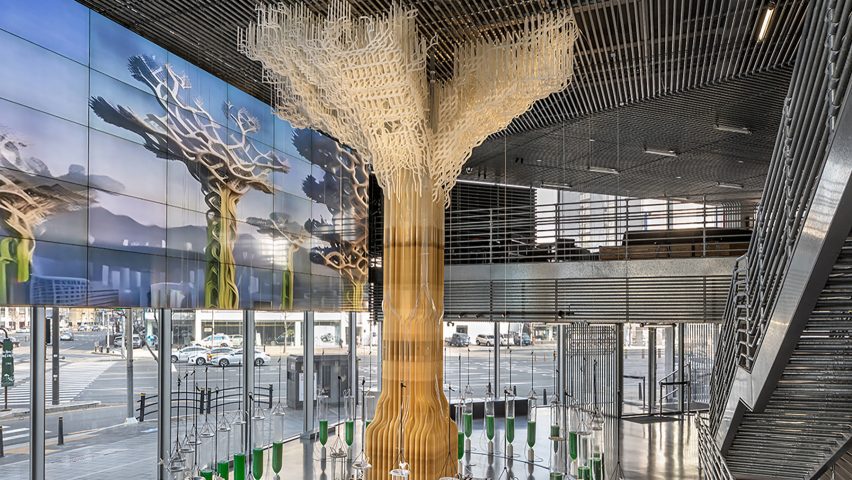
EcoLogicStudio turns algae into air-purifying biopolymer "tree"
Design practice EcoLogicStudio has turned algae into a biodegradable biopolymer, from which it has "grown" a 3D-printed, 10-metre-tall tree that carries out photosynthesis.
Titled Tree One, the massive, self-supporting tree sculpture was shown at two exhibitions presented by car brand Hyundai at its studios in Korea – first Habitat One in Busan and then Habitat One: Sustainable Shelter in Seoul.
The tree incorporates two algae-based elements – the trunk, which is 3D-printed from a biopolymer that EcoLogicStudio has formulated from the biomass created from harvested microalgae, and a number of photobioreactors containing living cyanidium microalgae cultures incorporated into the trunk and base of the installation.

The most recent installation, in Seoul, incorporated 40 of these glass photobioreactors, containing 500 litres of algae cultures that are actively carrying out photosynthesis, drawing carbon dioxide out of the air and releasing oxygen as they grow. EcoLogicStudio said the installation had a photosynthetic potential equivalent to 12 mature trees.
Tree One grew out of EcoLogicStudio's long-time interest in the air-purifying power of algae, which co-founder Claudia Pasquero described as being hugely efficient.
"When you use a mechanical filter, you extract elements from the air, but you still see the pollutants somewhere," she told Dezeen. "What happens with microalgae is that they really feed on them and by feeding, they grow and remetabolise, and by growing, they produce biomass."
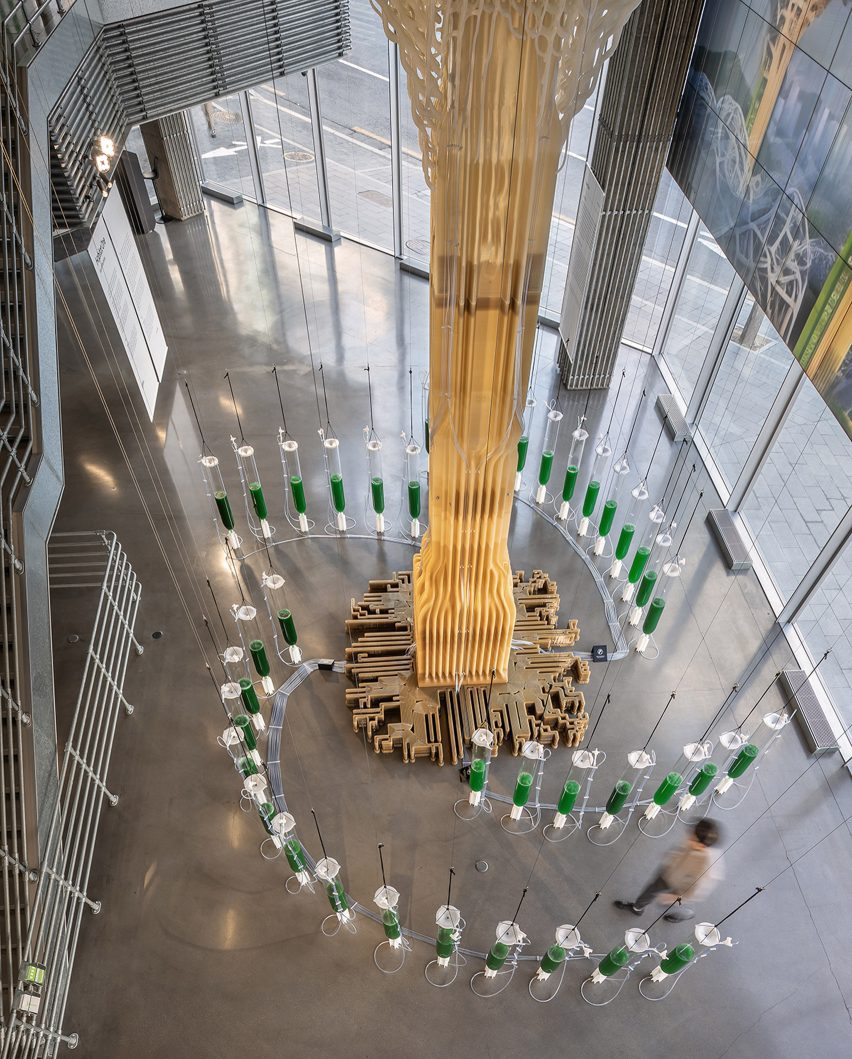
The biomass in question is more of the microalgae itself, which is also known as phytoplankton and is a single-celled organism. The microalgae growing in artificial environments such as EcoLogicStudio's photobioreactors needs to be harvested every few weeks to make way for new growth and remove naturally decayed cells.
With the harvested biomass, EcoLogicStudio has several options: it can either reuse it in a new photobioreactor, or it can dry it out and turn it into a product, such as a material or even a food source.
"With Tree One we started experimenting with bringing this back to architecture by synthesising a biopolymer that is completely biodegradable, can be 3D printed, and therefore despite being quite soft, acquires structural stability through its morphology," said Pasquero.
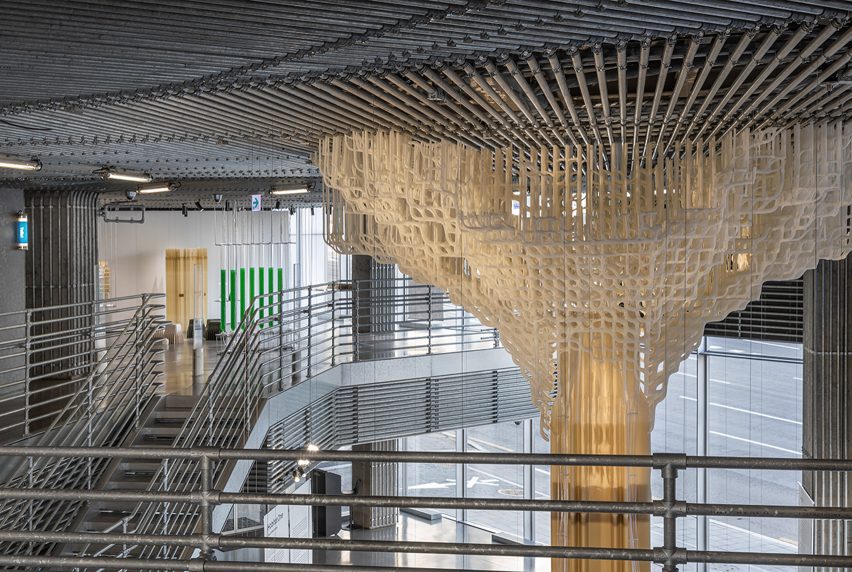
By making it into a material, EcoLogicStudio stores the carbon captured within the biomass until it is returned to the earth to biodegrade, in a similar way to timber.
"Tree One is the largest structure we have built with this idea to complete the overall cycle of remetabolisation of air and store the carbon in a new architectural structure," said Pasquero.
EcoLogicStudio made the biopolymer by combining the biomass with four other biodegradable ingredients – chitin (derived from mycelium, mushrooms or crustacean shells), agar (derived from potato peel or corn), vinegar and glycerin.
The designers used four industrial robots and 20 large-scale 3D-printing machines to extrude this material into the Tree One structure, which has a pleated shape that references the fibruous trunks of real trees and which gives it its strength.
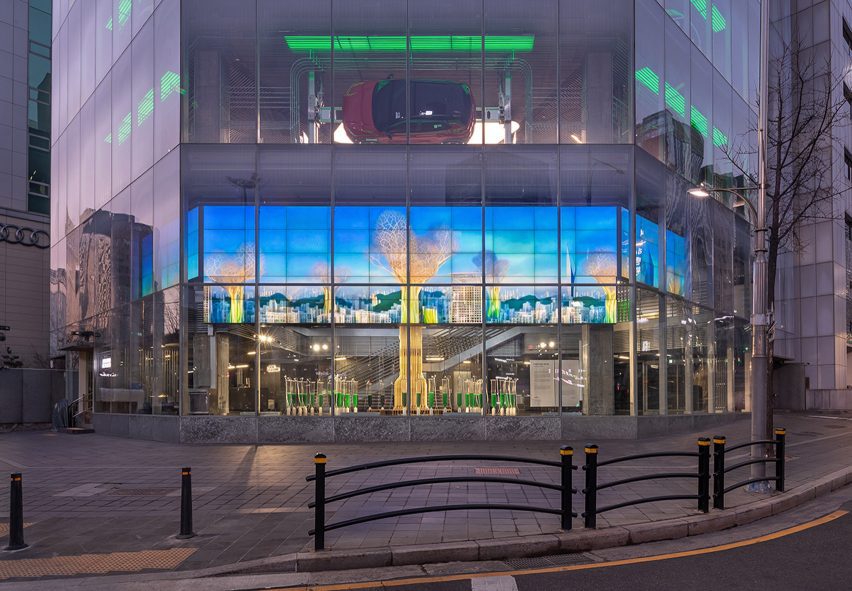
The design was developed with the help of algorithms that combined the logic of architectural columns and arboreal systems, mimicking the "biological intelligence" of the natural world to obtain maximum strength from the pliable material.
The designers started with a minimal path or minimal-network algorithm, which EcoLogicStudio co-founder Marco Poletto describes as simulating how fibres would grow from the base of a tree to the top. Another algorithm turned the bundles of fibres into more solid folds that could be extruded with one continuous line.
"Tree One plays a little bit with this archetype of architecture, the column, which since antiquity was inspired by nature, by trees," said Poletto. "There are classical orders, and maybe we have added one now, of a kind of bio-digital column."
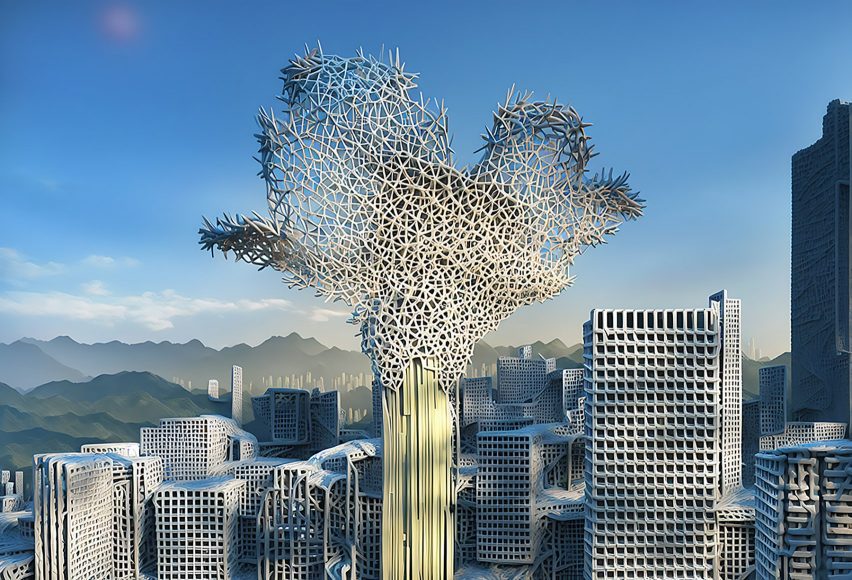
According to Poletto, the algae-based biopolymer used to make Tree One is already suitable for use as cladding on interiors or exteriors, while experimentation on larger, self-supporting structures continues.
Showing alongside the sculpture in the Habitat One: Sustainable Shelter exhibition were two videos using artificial intelligence to envision the architecture of carbon-neutral cities, and an educational "Bio Lab" that broke down the process of making Tree One.
"Imagining a carbon neutral city implies the complete redefinition of all our production, construction and waste recycling processes," said Pasquero. "It is not enough to consider upgrading a contemporary city through application of new green technology, but we need to imagine and visualise new photosynthetic processes that will determine its future growth."
EcoLogicStudio is based in London. Its recent work has included an air-purifying children's playground and the Bit.Bio.Bot exhibition of edible algae at the Venice Architecture Biennale.
Photography is by Joonhwan Yoon.
Habitat One: Sustainable Shelter was on show in Seoul until 14 May. See Dezeen Events Guide for an up-to-date list of architecture and design events taking place around the world.